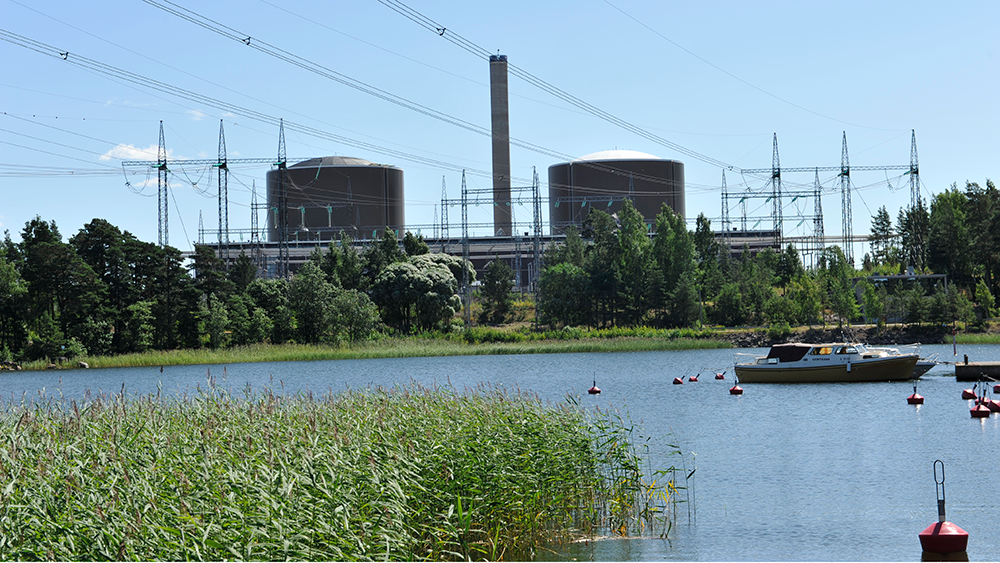Nuclear facilities include nuclear power plants and facilities for nuclear waste management

Finland has five active nuclear reactors with a combined gross output of approximately 4,400 MW. In total, the power plants produce more than 30 TWh of electricity in a year (22.6 TWh in 2021).
Fortum Power and Heat Oy have two pressurised water reactors, Loviisa 1 and Loviisa 2, located in the Loviisa nuclear power plant. Each reactor has a electricity output of 507 MW. The units were commissioned for commercial use in 1977 and 1981. The Loviisa power plant units will have valid operating licences until 2050.
Teollisuuden Voima Oyj (TVO) has two boiling-water power plant units Olkiluoto 1 and Olkiluoto 2, on Olkiluoto island in Eurajoki. Each unit has a electricity output of 890 MW. The units were commissioned in 1979 and 1982 and their current operating licences expire in 2038. Olkiluoto 3 has a capacity of approximately 1,600 MW. It was put in operation in 2023 and the unit is a pressurised water reactor.
The decommissioning of VTT Technical Research Centre of Finland Ltd's research reactor (FiR 1) in Otaniemi, Espoo, is currently underway. The reactor was shut down in 2015. In 2021 the Government granted VTT a licence to decommission and dismantle the research reactor.
Nuclear fuel is not manufactured in Finland; instead, all nuclear fuel used in facilities is imported. Power plants acquire fuel commercially, but Radiation and Nuclear Safety Authority (STUK) grants the licences for importing fuel as well as approves of the fuel consignments.
In February 2020, the government granted Terrafame Oy a licence to recover uranium from ore in the Sotkamo mine. Terrafame launched the recovery of natural uranium in June 2024. Uranium is a side product in a nickel mine, in which the metals are extracted as suitable combinations from ore on the mine site, to be processed into products. The recovered uranium is natural, and it must be chemically processed and the uranium isotope enriched (uranium isotopic enrichment, in which the enriched U-235’s share is increased in proportion to U-238) before it can be refined and used as nuclear reactor fuel. Uranium recovered from the Sotkamo mine is delivered abroad for further processing, after which it can be utilised in nuclear energy production.
The uranium recovery facility in Sotkamo is not a nuclear facility, but the recovery of uranium is considered use of nuclear energy under the Nuclear Energy Act and therefore requires the government’s licence. The Radiation and Nuclear Safety Authority supervises the recovery facility.
Spent nuclear fuel will be permanently disposed of in Finland
Low- and intermediate-level power plant waste will be disposed of at the nuclear power plant sites. Finland has final disposal facilities for operational waste in Olkiluoto and Loviisa. The spent nuclear fuel from the nuclear power plants in operation will be disposed of in Olkiluoto, Eurajoki. A final disposal facility is under construction there. Posiva Oy is in charge of the construction and usage of the final disposal facility.
The installation will consist of an encapsulation and underground disposal facility. In final disposal, spent fuel is enclosed in copper capsules in an encapsulation facility (i.e. KBS-3 technology) after which the capsules will be transported to the final disposal facility and placed into capsule holes drilled into the bedrock. The final disposal facilities are closed after they have been filled.
The facility is expected to be operational in the mid-2020s. Before that, Posiva Oy will need an operating licence from the government, which will be the first of its kind in the world. The expected life of the facility is approximately 100 years. With the current estimate of fuel, the facility would therefore be operational until 2120.
Further information: linda.kumpula(at)gov.fi and jaakko.louvanto(at)gov.fi
